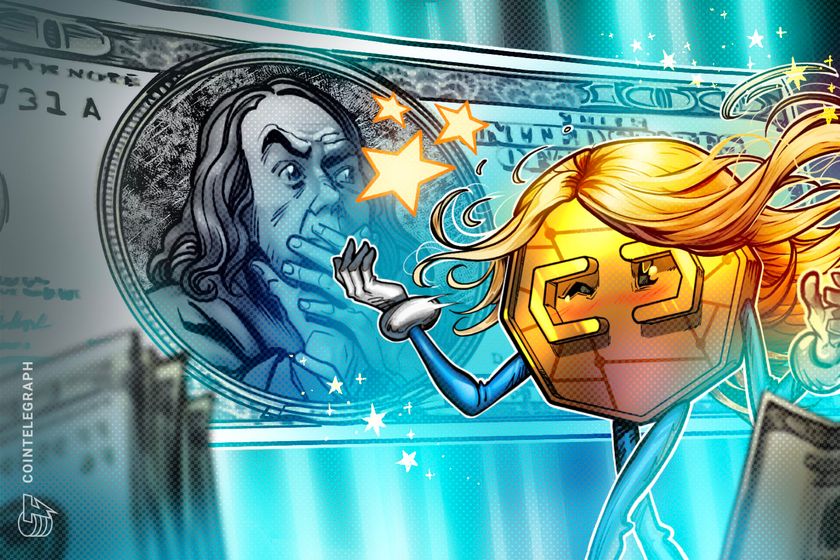

The US dollar has long reigned as the world’s primary reserve currency and the default choice for global trade and international transactions. But its dominance is now facing growing scrutiny as shifting geopolitical and economic forces—and concerns over the potential weaponization of the greenback—push more countries to accelerate efforts to loosen their dependence on the dollar.
By almost every measure, the US dollar’s command of the global economy is staggering. Although the country accounts for roughly 25% of global GDP, its currency reigns over nearly 60% of global foreign exchange reserves—far outpacing its nearest rival, the euro.
But this dominance is increasingly under pressure, with the strategic use of economic sanctions in the past leading some countries to seek alternatives, even as US President Donald Trump regularly threatens 100% tariffs on countries that actively seek to substitute the greenback.
In Russia, whose access to the SWIFT payment platform is crippled by sanctions, companies have been using cryptocurrencies as a means to skirt restrictions, turning to Bitcoin and other digital assets to conduct cross-border business. While crypto was barred as illegal by the country´s central bank years ago, recent changes to the regulation have paved the way for corporations to embrace cryptocurrencies since late last year.
The country the use of cryptocurrencies in foreign trade and has taken steps to make it legal to mine cryptocurrencies, including Bitcoin.
Since Bitcoin’s inception, crypto advocates have been fixated on “dedollarization,” often described as the push to reduce the US dollar’s dominance as the global reserve currency. The term broadly refers to moving away from the dollar in key financial and trade activities, including oil and commodity transactions (the petrodollar system), foreign exchange reserves, bilateral trade agreements, and investments in dollar-denominated assets.
A 2024 paper by Morgan Stanley’s head of Digital Asset Markets, Andrew Peel, suggested that the rise of digital currencies presents “opportunities to both erode and reinforce” the US dollar’s dominance, with the potential to significantly alter the global currency landscape.
Still, while digital assets—most notably stablecoins— are increasingly gaining traction, the crypto market’s dedollarization expectations look premature.
While Bitcoin is increasingly seen as a strategic reserve asset, experts caution that it’s still too soon to call it a true alternative to the US dollar. Countries like El Salvador have embraced Bitcoin aggressively, with the asset now making up about 15% to 20% of the nation’s total reserves. The US has reportedly considered similar moves, but widespread adoption remains limited, and questions persist about whether such steps would undermine the dollar rather than support it.
According to Bitcoin Depot CEO Brandon Mintz,
“For Bitcoin to become a true alternative to the USD, it would require broader mainstream adoption, clearer regulatory frameworks, and more scalable infrastructure.”
Currently, Bitcoin acts more like a hedge and a store of value than a dollar replacement, but its role could shift as global financial dynamics evolve. Factors like inflation and geopolitical tensions, Mintz said, could drive more interest.
While institutional adoption and cross-border use are on the rise, Mintz said that it remains to be seen “whether Bitcoin can genuinely challenge the dominance of the dollar as this will depend on how these trends develop over time.”
Despite its growing appeal, Bitcoin’s volatility remains a significant challenge. According to the , Bitcoin exhibits considerably higher volatility than gold and shows a greater correlation with Nasdaq tech stocks than with traditional safe-haven assets.
Gold and major asset 5-year average daily volatility - annualized. Source: World Gold Council.
Eswar Prasad, a trade professor at Cornell University, told Cointelegraph,
“Decentralized cryptocurrencies such as Bitcoin still have highly volatile values, rendering them unsuitable as mediums of exchange or as reserve currencies.”
Since the end of World War II, the US dollar has reigned as the world’s dominant currency, powering around 88% of global trade transactions in 2024.
The dollar’s status as the leading international currency is well-established. According to the, as of the third quarter of 2024, central banks held about 58 percent of their allocated reserves in US dollars—much of it in cash and US bonds. This is significantly higher than the euro, second in the race, which accounts for as much as 20%